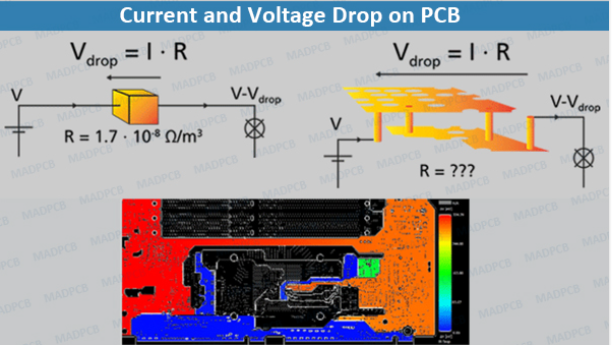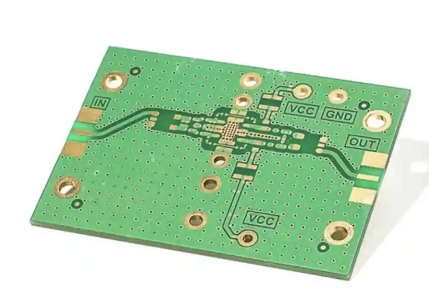Kicad-pcb
Introduction To KiCad-PCB: A Beginner’s Guide
KiCad-PCB is an open-source software suite for electronic design automation (EDA), which facilitates the creation of schematics and printed circuit board (PCB) layouts. As the demand for custom electronics continues to grow, KiCad-PCB has emerged as a popular choice among hobbyists, educators, and professionals alike, due to its robust features and cost-free accessibility. This beginner’s guide aims to introduce the fundamental aspects of KiCad-PCB, providing a foundation for those new to the software and the world of PCB design.
To begin with, KiCad-PCB offers a comprehensive set of tools that cater to the entire PCB design process.
The suite includes applications for schematic capture, PCB layout, 3D visualization, and even a Gerber file viewer, which is essential for the final manufacturing stage. The integration of these tools within a single platform streamlines the design workflow, allowing users to transition seamlessly from one stage to the next. This cohesive environment is particularly beneficial for beginners, as it reduces the learning curve associated with managing multiple software applications.
One of the key features of KiCad-PCB is its schematic capture tool, Eeschema.
This tool allows users to create detailed electronic circuit diagrams, which serve as the blueprint for the PCB layout. Eeschema provides a wide range of components and symbols, enabling users to accurately represent their circuit designs. Additionally, the tool supports hierarchical schematics, which is a powerful feature for organizing complex designs into manageable sections. This capability not only enhances the clarity of the design but also facilitates easier troubleshooting and modifications.
Following the schematic capture, the next step in the design process is the PCB layout, which is handled by KiCad’s Pcbnew tool.
Pcbnew allows users to import their schematics and begin arranging the physical layout of the PCB. The tool offers a variety of features to assist in this process, including a grid system for precise component placement, design rule checks to ensure manufacturability, and an autorouter to automate the routing of electrical connections. These features collectively contribute to an efficient and accurate layout process, which is crucial for the functionality of the final product.
Moreover, KiCad-PCB includes a 3D viewer, which provides a realistic visualization of the PCB design.
This feature is particularly useful for verifying component placement and ensuring that the design meets physical constraints before proceeding to manufacturing. The 3D viewer supports a wide range of file formats, allowing users to import custom 3D models for components that may not be included in the default library. This flexibility is advantageous for those working on unique or specialized projects.
In addition to its technical capabilities, KiCad-PCB benefits from a vibrant and active community.
This community contributes to the continuous improvement of the software by developing plugins, creating tutorials, and providing support through forums and online groups. For beginners, this wealth of resources can be invaluable, offering guidance and solutions to common challenges encountered during the design process.
In conclusion, KiCad-PCB is a powerful and versatile tool for PCB design, offering a comprehensive suite of features that cater to both novice and experienced users. Its open-source nature, combined with a supportive community, makes it an accessible and attractive option for anyone interested in electronic design. By understanding the basic functionalities of KiCad-PCB, beginners can embark on their journey into the world of PCB design with confidence and creativity.
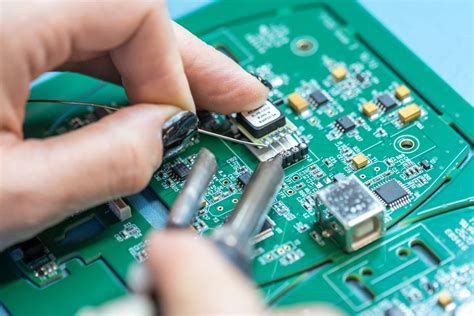
Advanced Techniques In KiCad-PCB Design
KiCad-PCB, an open-source software suite for electronic design automation, has become a popular choice among engineers and hobbyists alike for creating printed circuit boards (PCBs). As users become more familiar with its basic functionalities, the need to explore advanced techniques becomes apparent to fully leverage the software’s capabilities. Understanding these advanced techniques can significantly enhance the efficiency and quality of PCB designs.
To begin with, mastering the art of component library management is crucial.
KiCad allows users to create and manage custom libraries, which can be a game-changer for complex projects. By organizing components into custom libraries, designers can streamline the design process, ensuring that frequently used components are readily accessible. This not only saves time but also reduces the likelihood of errors associated with component selection. Furthermore, utilizing the library management tools effectively can facilitate collaboration among team members, as shared libraries ensure consistency across different projects.
Another advanced technique involves the use of hierarchical schematics.
As PCB designs grow in complexity, managing a single, flat schematic can become cumbersome. Hierarchical schematics allow designers to break down the design into manageable sections, each represented by a block in the top-level schematic. This modular approach not only simplifies the design process but also enhances readability and troubleshooting. By encapsulating different functional blocks, designers can focus on individual sections without losing sight of the overall design.
Transitioning from schematic to layout, the importance of design rules cannot be overstated.
KiCad offers a robust set of design rule checks (DRC) that help ensure the layout adheres to specified constraints. Advanced users can customize these rules to suit specific project requirements, such as trace width, clearance, and via sizes. By tailoring the DRC settings, designers can preemptively address potential issues, thereby reducing the need for costly revisions later in the design cycle.
Moreover, the use of differential pair routing is an advanced technique that is particularly relevant for high-speed digital designs.
KiCad supports differential pair routing, which is essential for maintaining signal integrity in high-speed communication interfaces. By ensuring that paired traces are routed together with controlled impedance, designers can minimize electromagnetic interference and signal degradation. This technique is indispensable for applications such as USB, HDMI, and Ethernet, where data integrity is paramount.
In addition to these techniques, the integration of simulation tools within KiCad can greatly enhance the design process.
By simulating circuits before committing to a physical prototype, designers can validate their designs and identify potential issues early on. KiCad’s integration with SPICE-based simulation tools allows for comprehensive analysis of circuit behavior, enabling designers to optimize performance and reliability.
Finally, the ability to generate and interpret Gerber files is an essential skill for advanced KiCad users
. Gerber files are the industry standard for PCB manufacturing, and understanding how to generate them correctly is crucial for ensuring that the final product matches the design intent. KiCad provides a suite of tools for generating and reviewing these files, allowing designers to verify that all layers, including copper, solder mask, and silkscreen, are accurately represented.
In conclusion, while KiCad-PCB offers a user-friendly interface for beginners, delving into its advanced techniques can unlock a new level of design proficiency. By mastering component library management, hierarchical schematics, design rule customization, differential pair routing, simulation integration, and Gerber file generation, designers can significantly enhance their productivity and the quality of their PCB designs. As the demand for more sophisticated electronic devices continues to grow, these advanced techniques will be invaluable in meeting the challenges of modern PCB design.
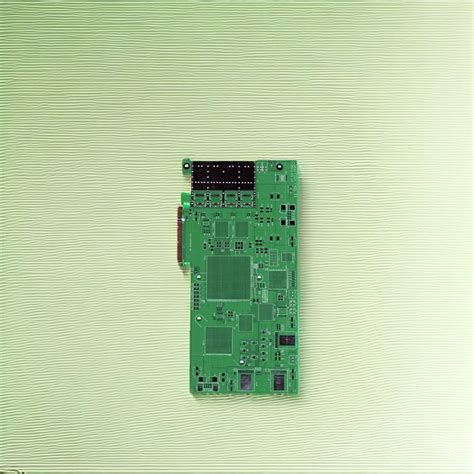
Optimizing Your Workflow With KiCad-PCB
KiCad-PCB, an open-source software suite for electronic design automation (EDA), has become an indispensable tool for engineers and hobbyists alike. Its comprehensive features and user-friendly interface make it an ideal choice for designing printed circuit boards (PCBs). To optimize your workflow with KiCad-PCB, it is essential to understand its capabilities and how to leverage them effectively.
One of the primary advantages of KiCad-PCB is its modular design, which allows users to work on different aspects of a project simultaneously.
This modularity is achieved through its suite of tools, including Eeschema for schematic capture, Pcbnew for PCB layout, and GerbView for viewing Gerber files. By utilizing these tools in tandem, users can streamline their design process, ensuring that each stage of development is both efficient and effective.
To begin optimizing your workflow, it is crucial to start with a well-organized schematic in Eeschema.
A clear and concise schematic not only aids in the design process but also minimizes errors during the PCB layout phase. Utilizing hierarchical sheets can further enhance organization, allowing complex designs to be broken down into manageable sections. This approach not only simplifies the design process but also facilitates easier collaboration among team members.
Once the schematic is complete, transitioning to Pcbnew for PCB layout is the next step.
Here, KiCad-PCB offers a range of features to enhance productivity. The interactive router, for instance, allows for precise and efficient routing of traces, significantly reducing the time required for manual routing. Additionally, the design rule checker (DRC) ensures that the layout adheres to specified constraints, preventing costly errors during manufacturing.
Moreover, KiCad-PCB supports a wide array of component libraries, which can be customized to suit specific project requirements.
By creating and maintaining a personalized library, users can quickly access frequently used components, thereby reducing the time spent searching for parts. This customization extends to footprint creation, where users can design unique footprints tailored to their specific needs, further optimizing the layout process.
Another key aspect of optimizing workflow with KiCad-PCB is the use of scripts and plugins.
These tools can automate repetitive tasks, such as generating bill of materials (BOM) or performing batch operations, thereby freeing up valuable time for more critical design activities. The active community surrounding KiCad-PCB continually develops new plugins, providing users with an ever-expanding toolkit to enhance their workflow.
Furthermore, effective project management is essential for optimizing workflow.
KiCad-PCB’s project file structure allows for easy organization and version control, ensuring that all project files are systematically stored and accessible. Utilizing version control systems, such as Git, in conjunction with KiCad-PCB can further enhance collaboration and project management, allowing multiple users to work on a project simultaneously without the risk of data loss or conflicts.
In conclusion, optimizing your workflow with KiCad-PCB involves a combination of strategic planning, effective use of its features, and leveraging community resources. By organizing schematics, utilizing advanced layout tools, customizing libraries, and employing automation through scripts and plugins, users can significantly enhance their productivity. As the EDA landscape continues to evolve, KiCad-PCB remains a powerful and adaptable tool, capable of meeting the diverse needs of its users while fostering innovation and efficiency in PCB design.
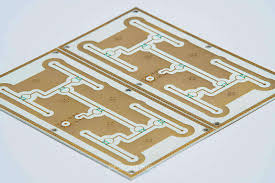
Troubleshooting Common Issues In KiCad-PCB
KiCad-PCB is a widely used open-source software suite for electronic design automation, offering a comprehensive set of tools for designing and creating printed circuit boards (PCBs). Despite its robust capabilities, users may occasionally encounter issues that can hinder their design process. Understanding how to troubleshoot these common problems can significantly enhance the user experience and ensure a smoother workflow.
One frequent issue users face is related to the schematic and PCB layout synchronization.
This problem often arises when changes made in the schematic are not reflected in the PCB layout, leading to inconsistencies. To address this, it is crucial to ensure that the schematic and PCB files are correctly linked. Users should regularly update the PCB from the schematic by using the “Update PCB from Schematic” tool. This action ensures that all components and connections are accurately transferred, minimizing the risk of discrepancies.
Another common challenge involves the design rules check (DRC) errors.
These errors can occur due to violations of the predefined design rules, such as minimum trace width or clearance between components. To troubleshoot DRC errors, users should carefully review the error messages provided by KiCad and cross-reference them with the design rules set for the project. Adjusting the design to comply with these rules often resolves the issue. Additionally, users can customize the design rules to better fit their specific project requirements, which can prevent future errors.
Component footprint mismatches are also a prevalent issue in KiCad-PCB.
This problem typically occurs when the footprint assigned to a component in the schematic does not match the actual footprint used in the PCB layout. To resolve this, users should verify that the correct footprint is assigned to each component in the schematic. This can be done by cross-checking the component properties and ensuring that the footprint library is up-to-date. If necessary, users can create custom footprints to match their specific components, thereby avoiding mismatches.
Moreover, users may encounter difficulties with the netlist generation and import process.
A corrupted or incomplete netlist can lead to missing connections or components in the PCB layout. To troubleshoot this, users should regenerate the netlist from the schematic and ensure that it is correctly imported into the PCB layout. It is also advisable to check for any warnings or errors during the netlist generation process, as these can provide valuable insights into potential issues.
In addition to these technical challenges, users might experience performance issues, particularly with large or complex designs.
KiCad-PCB can become sluggish or unresponsive when handling extensive projects. To mitigate this, users can optimize their design by reducing the number of layers or simplifying the layout where possible. Additionally, ensuring that the computer system meets the recommended hardware specifications for running KiCad can improve performance.
In conclusion, while KiCad-PCB is a powerful tool for PCB design, users may encounter various issues that can disrupt their workflow. By understanding and addressing common problems such as schematic and PCB layout synchronization, DRC errors, component footprint mismatches, netlist generation issues, and performance challenges, users can enhance their design process and achieve more reliable results. Employing these troubleshooting strategies not only resolves immediate concerns but also contributes to a more efficient and effective use of KiCad-PCB in future projects.



